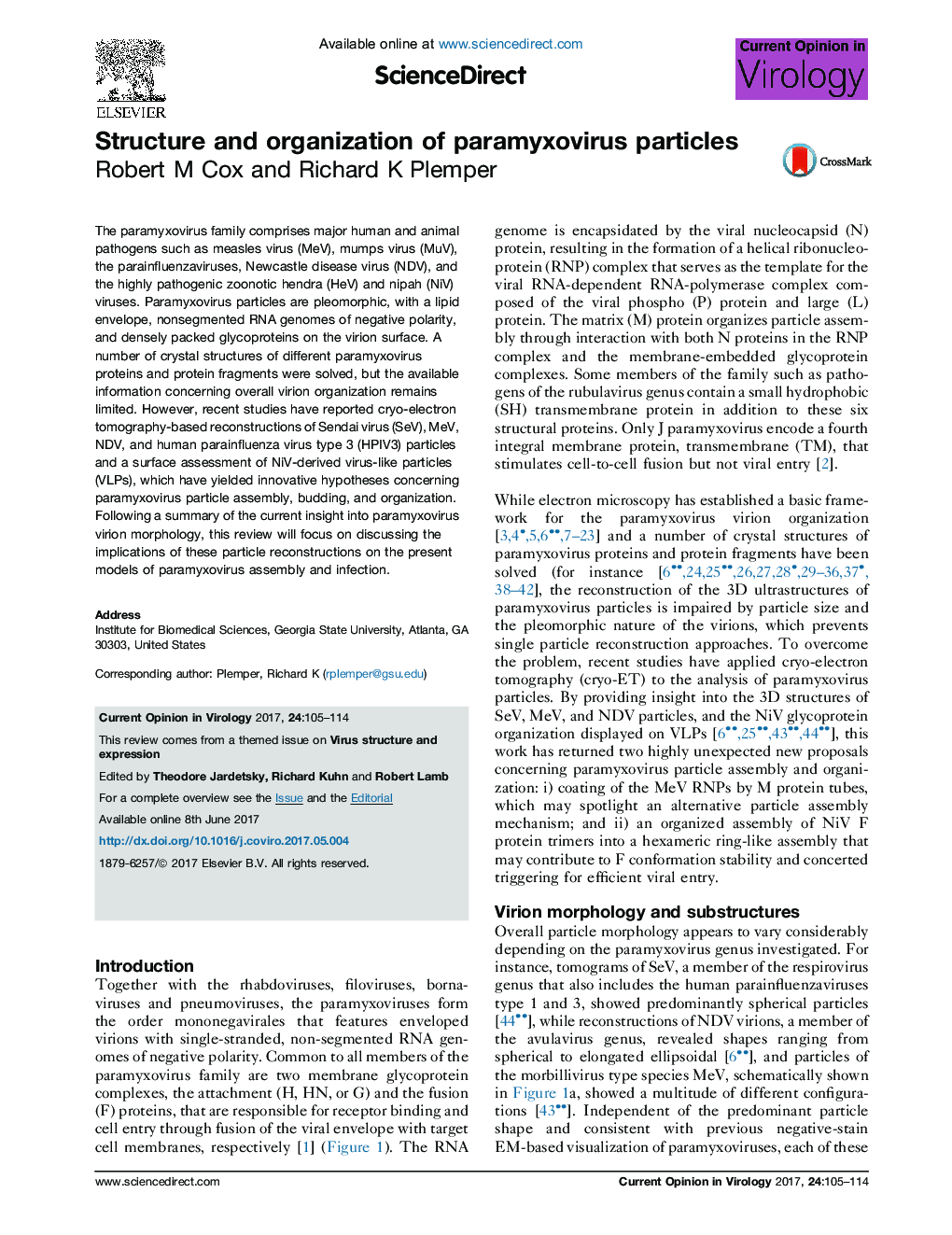| Article ID | Journal | Published Year | Pages | File Type |
|---|---|---|---|---|
| 5546221 | Current Opinion in Virology | 2017 | 10 Pages |
â¢Cryo-electron tomography reconstructions of paramyxovirus particles have yielded novel insight into virion assembly and organization.â¢Newcastle disease virus matrix protein formed distinct matrix arrays below the viral envelope.â¢Tubular matrix protein assemblies were observed in measles virus particles that wrap the viral genome into matrix sheaths.â¢The physiological role of tubular matrix sheaths is unclear but could involve mediating polymerase shut-off at particle assembly.â¢Nipah virus like particles have shown a previously unappreciated a hexameric ring-like organization of the viral fusion protein.
The paramyxovirus family comprises major human and animal pathogens such as measles virus (MeV), mumps virus (MuV), the parainfluenzaviruses, Newcastle disease virus (NDV), and the highly pathogenic zoonotic hendra (HeV) and nipah (NiV) viruses. Paramyxovirus particles are pleomorphic, with a lipid envelope, nonsegmented RNA genomes of negative polarity, and densely packed glycoproteins on the virion surface. A number of crystal structures of different paramyxovirus proteins and protein fragments were solved, but the available information concerning overall virion organization remains limited. However, recent studies have reported cryo-electron tomography-based reconstructions of Sendai virus (SeV), MeV, NDV, and human parainfluenza virus type 3 (HPIV3) particles and a surface assessment of NiV-derived virus-like particles (VLPs), which have yielded innovative hypotheses concerning paramyxovirus particle assembly, budding, and organization. Following a summary of the current insight into paramyxovirus virion morphology, this review will focus on discussing the implications of these particle reconstructions on the present models of paramyxovirus assembly and infection.
